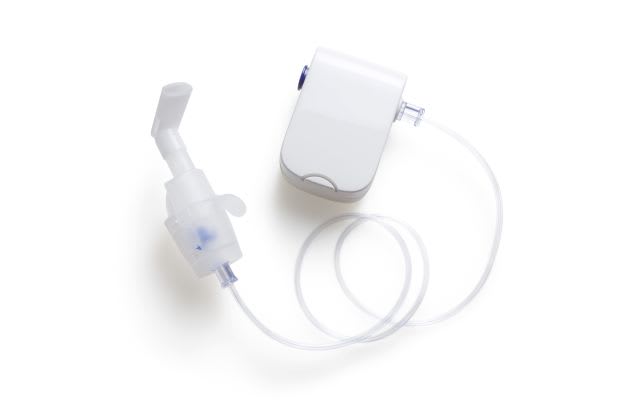Table of Contents
I. Understanding the Signs & Symptoms of Asthma
II. What are Common Asthma Symptoms?
III. What does Flovent HFA do?
IV. How to use Flovent Properly
V. Side Effects of Flovent HFA
Understanding the Signs & Symptoms of Asthma
Flovent HFA is an inhaler medication used to improve asthma symptoms. Asthma affects around 25 million Americans, so there are many medications on the market to assist with symptoms. Living with asthma can take a toll on your physical and mental health. Asthma occurs in about one in 13 people in the United States but is more common in adult women than men. [1]
This condition varies significantly from person to person. Some may have mild symptoms in childhood that go away over time, while others experience chronic asthma throughout their life. Regardless of your symptoms, it is important to take your medication properly to avoid serious complications like an asthma attack.
Asthma occurs when the airways become swollen and inflamed. The airways produce extra mucus and the bronchial tubes narrow. An asthma attack is characterized by exacerbated asthma symptoms but can usually be treated at home with prompt treatment from your rescue inhaler. In more severe cases, at-home treatment is not sufficient and emergency treatment is necessary right away. Read on to learn more about the importance of Flovent HFA in a successful asthma treatment plan. [2]

What are Common Asthma Symptoms?
Asthma symptoms are often triggered by an allergen or vigorous exercise. Asthma may also occur during moments of extreme stress. If you have been living with asthma for a long time, you are likely well aware of what causes your symptoms to flare up. Avoiding your triggers is the best option, but that is not always possible. The most common asthma symptoms include:
- Shortness of breath
- Chest tightness
- Wheezing
- Trouble sleeping due to shortness of breath or coughing
Regular use of rescue inhalers and long-term inhalers like Flovent HFA can usually take care of common symptoms. If you notice that your inhalers are not assisting in your symptoms like they used to, you may want to consult your doctor about changing your inhaler dosage. Your asthma may be worsening if you:
- Find yourself using your rescue inhaler more often than normal (several times a day)
- Notice an increased frequency of asthma symptoms [3]
What does Flovent HFA do?
Flovent HFA is an inhaler approved for patients four years and older. Fluticasone propionate is the main ingredient of Flovent. This synthetic corticosteroid is used to reduce airway inflammation and improve breathing.
Corticosteroids are naturally occurring substances in the body that help the body fight inflammation. When Flovent is inhaled, the synthetic corticosteroids target your inflamed airways and bronchial tubes, reducing irritation and increasing airflow to the lungs.
Like all medications, Flovent works best when taken regularly and as directed by your doctor. The HFA version of Flovent comes in an inhaled mist, whereas Flovent Diskus is an inhaled powder. Flovent does not cure sudden breathing problems. It is taken daily to reduce the risk of asthma attacks to improve your asthma condition. Flovent will not treat an asthma attack, but it prevents adverse symptoms over a long period. [4]

How to use Flovent Properly
It is important to follow your doctor’s instructions when beginning a new inhaler medication. Flovent HFA needs to be used every day to keep your asthma symptoms well-controlled. Once prescribed Flovent, your doctor will inform you on how to use your inhaler properly. Some tips include:
- Shake the inhaler for five seconds before each use.
- Before taking the medication, breathe out fully to get as much air out of the lungs as possible.
- Put the mouthpiece into your mouth and close your lips around it. Depress the top of the metal canister and release it once the puff is delivered.
- Breathe in through your mouth quickly and deeply, holding your breath for 10 seconds.
- If your doctor prescribes more than one puff, wait 30 seconds before the second inhalation.
- Rinse your mouth with water after breathing in the medicine.
- Clean the mouthpiece once a week. [5]
Side Effects of Flovent HFA
When taken correctly, it is unlikely that Flovent HFA will cause serious side effects. Before starting this medication, it is essential to tell your doctor about any other medications you are taking or any allergies you may have. This can prevent unwanted side effects and interactions with Flovent HFA.
The most common side effect of Flovent HFA is white patches in the mouth and throat. If you do not wash your mouth out after using your inhaler, white patches may occur due to a build-up of the medication. Other less common side effects include:
- Bone pain
- Nausea
- Diarrhea
- Earache
- Stomach pain
- Sore throat
- Trouble swallowing
- Vomiting
- Vaginal discharge

Rare side effects include:
- Excess facial hair in women
- Bone fractures
- Blindness or blurred vision
- Muscle wasting
- Tightness in the chest
- Weakness
- Swelling in the face, lips, or eyelids [5]
If you experience any of these symptoms, you should seek medical attention. It is important to remember that Flovent HFA does not immediately cure asthma symptoms, so use your emergency inhaler if you have chest tightness or shortness of breath. The average asthma treatment plan involves both a long-term inhaler like Flovent and a rescue inhaler. If you have any questions about your asthma treatment plan, talk to your doctor or learn more about asthma through Canada Pharmacy Delivery’s Health and Wellness Journal.
The content in this article is intended for informational purposes only. This website does not provide medical advice. In all circumstances, you should always seek the advice of your physician and/or other qualified health professionals(s) for drug, medical condition, or treatment advice. The content provided on this website is not a substitute for professional medical advice, diagnosis, or treatment.
